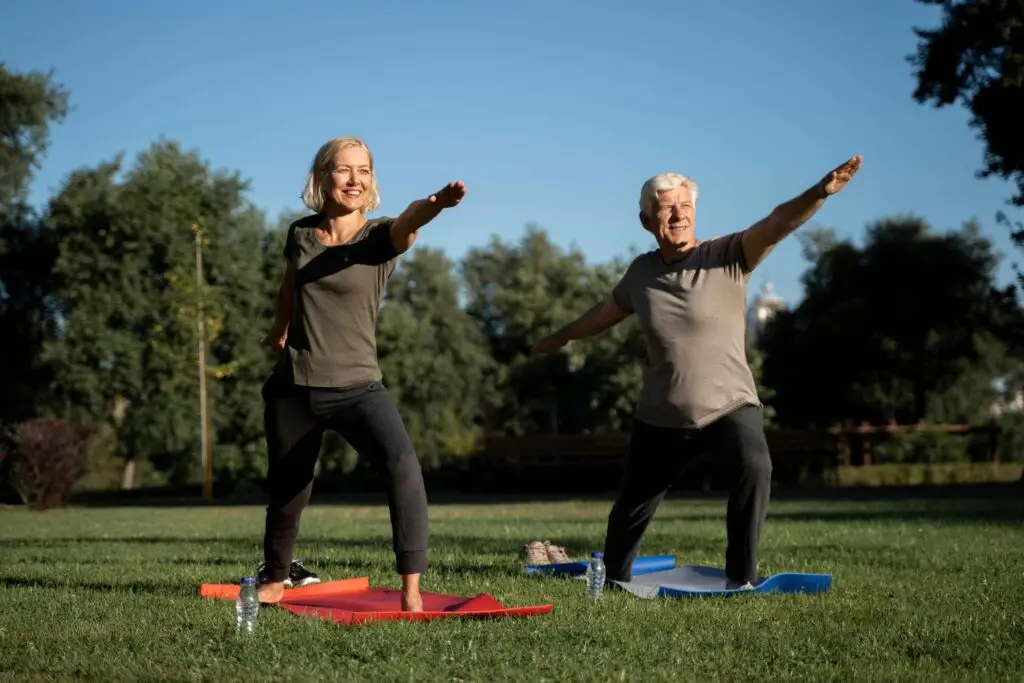How Seniors Can Avoid Medication Mix-Ups
For many seniors, medications are a lifeline. They control chronic conditions like high blood pressure, arthritis, or diabetes, and they allow people to live more comfortably as they age. But relying on many different prescriptions and counter medications also increases risk.
Even a small error—like taking the wrong medication, missing a dose, or mixing drugs that shouldn’t be combined—can quickly become life-threatening. This guide explains how seniors can avoid medication mix-ups with simple, proven routines.
The Centers for Disease Control and Prevention and the National Institute on Aging have both warned that common medication errors are a serious issue for older adults.
The reason is simple: seniors often use multiple medications at the same time, and this makes it harder to keep track of schedules, doses, and possible drug interactions. The encouraging part is that these mistakes are not inevitable.
With planning, good routines, and the guidance of a doctor or pharmacist, seniors can stay safe and maintain effective treatment.
Why Do Errors Happen More After 60?
Medication errors among older adults often follow predictable patterns. Once you understand the reasons why errors happen after 60, it becomes easier to see how those risks turn into real mistakes. The most frequent issue is missed or extra doses.
Seniors sometimes forget a pill, take one twice, or confuse two similar pill bottles. Even small slip-ups like this can make a treatment less effective or trigger unexpected side effects.
Another common error involves drug interactions. When a new prescription drug is added without a full review of an updated list of all medications, it can interfere with existing therapies. One medicine may weaken the effect of another, or it may make it dangerously stronger.
The risk is especially high when seniors rely on several specialists who each prescribe medications without a complete picture of the patient’s daily routine.
Food and lifestyle habits also play a role. Grapefruit, for example, is known to alter how certain heart and blood-pressure medicines are absorbed. Alcohol can magnify drowsiness or confusion, turning mild side effects into something more serious.

Even seemingly harmless counter medications or supplements can disrupt how a drug works, leaving the body either under-treated or at risk of a life-threatening reaction.
Finally, administrative mistakes are a frequent problem. Some medicines are meant to be taken with food, others on an empty stomach, and timing can affect how well they work.
Taking a pill at the wrong time of day, stopping too early, or ignoring directions about food and water may reduce effectiveness or lead to medication mistakes that are easy to avoid with clearer guidance.
Together, these patterns highlight the importance of strong routines, careful attention to instructions, and open conversations with a doctor or pharmacist. By recognizing how errors usually occur, seniors and caregivers can take practical steps to prevent medication errors before they cause harm.
How Seniors Can Avoid Medication Mix-Ups: Practical Steps
Step 1: Keep an Updated Medication List
Write down all prescription drugs, over-the-counter medicines, vitamins, and herbal remedies. Include both brand and generic names, the dosage, the schedule, and the condition being treated. Update the list with any side effects you notice and carry it to every appointment. Sharing this list with caregivers ensures someone else can step in if needed.
Step 2: Use a Weekly Pill Organizer
Transfer daily medications into a weekly organizer that divides doses by day and time. Only put medicines taken on a set schedule into the box, while “as-needed” drugs remain in their original bottles. If you are unsure how to fill it, ask a caregiver or pharmacist to check.
Step 3: Set Up Reminders
Use phone alarms, calendar alerts, or a simple checklist to track doses. Marking each medicine after you take it helps prevent both missed doses and double dosing.
Step 4: Learn About Each Medicine
Understand the specific instructions for every prescription. Some medicines must be taken with food, others on an empty stomach. Certain foods like grapefruit or substances such as alcohol can interfere with effectiveness or increase risks. Always confirm details with your doctor or pharmacist instead of guessing.
Step 5: Schedule Regular Medication Reviews
Meet with healthcare providers at least once a year—or more often if new prescriptions are added—to review your full medication list. This process ensures no overlaps, harmful interactions, or unnecessary medicines remain in your routine. It also allows your care team to simplify complex schedules and catch potential problems early.
How Seniors Can Avoid Medication Mix-Ups?
Working Closely with Professionals
Maintaining medication safety requires open communication with healthcare providers. A doctor or pharmacist is not only responsible for prescribing and dispensing medicines; they are also key partners in preventing medication mistakes. They can explain why each drug is needed, how it should be taken, and what side effects to watch for.
Pharmacists in particular use software that scans for possible drug interactions across all of a patient’s prescriptions. They are also trained to suggest safer alternatives, different formulations such as liquids or dissolvable tablets, and even dosing adjustments.
Seniors should feel comfortable asking questions and should never hesitate to answer questions honestly about everything they take, including supplements and herbal remedies. Full disclosure ensures professionals can provide the best guidance and helps prevent medication errors before they happen.
Building Safe Routines at Home
Most medication mistakes occur at home, where daily routines can either support or undermine safety. A strong routine begins with organization. Medicines should remain in their original packaging, which carries important information about dosing and expiration.
Clear labels reduce confusion and protect against mixing up the wrong medication. Good lighting is also essential, since many errors occur when directions are misread in dim light.
Time management is another part of the system. Seniors benefit from alarms on phones, clocks, or watches that remind them when a dose is due. Weekly organizers or automatic dispensers are especially helpful for those managing multiple medications.
Keeping all refills at the same pharmacy adds another layer of protection, because pharmacists can monitor prescriptions across the entire list and catch common medication errors before they reach the patient.
Finally, medicines should be stored safely. Bathrooms are a poor choice due to moisture and heat, which can degrade drugs. Instead, medications should be kept in a cool, dry place.
If there are grandchildren or visitors in the home, medicines should be locked away, since child-resistant caps are not fully childproof. These simple habits are the backbone of how seniors can avoid medication mix-ups day to day.
Spotting Red Flags Early
Even when medicines are taken exactly as prescribed, problems can still develop. Seniors and caregivers should know the warning signs that point to medication mistakes, drug interactions, or unexpected side effects. Recognizing these signs early allows for quick action and can prevent a situation from becoming life-threatening.
Confusion is one of the most common red flags. If a senior suddenly seems disoriented, forgetful, or unusually tired, it may be linked to a new prescription drug or a change in dosage.
Dizziness or loss of balance should also be taken seriously, since they not only suggest a possible reaction but also increase the risk of falls.
Swelling in the legs or hands, unexpected bruising, or unusual bleeding can signal a hidden medication mistake or a dangerous drug interaction that requires urgent attention.
Digestive changes are another clue. Severe constipation, stomach pain, or nausea may point to a reaction between multiple medications or an issue with how the body is processing the drug.

Because the kidneys and liver clear medicine more slowly as people age, even a standard dose can sometimes cause stronger side effects than expected.
When any of these red flags appear, it is important not to ignore them. Bring the affected person’s pill bottles and their updated list of all medications to the healthcare provider so they have the full picture.
This makes it easier to identify the cause quickly and adjust treatment safely. If symptoms are severe—such as chest pain, breathing trouble, or fainting—emergency care should be sought immediately.
Spotting problems early and responding quickly is one of the best ways to prevent medication errors from turning into medical emergencies.
It reinforces the idea that medication safety is not only about taking drugs correctly but also about listening to the body and acting fast when something doesn’t seem right.
The Role of Caregivers
For many seniors, staying safe with medicines is not a solo task. Caregivers are often the ones who make sure doses are taken correctly and schedules are followed. They can help maintain an updated list, prepare weekly organizers, and review instructions after medical appointments.
Caregivers are also in a unique position to notice changes. A senior may not connect new confusion or fatigue with a medicine, but a caregiver might see the pattern.
By reporting these observations to a doctor or pharmacist, caregivers play a direct role in preventing medication errors. Their presence ensures another layer of protection against common medication mistakes.
What to Do if a Mix-Up Happens?
Despite best efforts, errors sometimes occur. When a mix-up is suspected, stay calm and read the label to confirm the name and dose. Call Poison Control at 1-800-222-1222 for immediate guidance on medication safety.
If there is chest pain, trouble breathing, or fainting, call 911 at once. After the urgent issue is handled, notify your doctor or pharmacist so they can adjust the plan and prevent medication errors going forward. Quick, clear steps can turn a crisis into a manageable event.
What the Evidence Shows
Studies from sources such as the Centers for Disease Control and Prevention and the National Institute on Aging highlight how serious the problem has become. Polypharmacy, or the use of many drugs at once, is linked to lower physical quality of life in seniors.
Research shows that older adults with long medication lists are more likely to suffer from harmful side effects and to require emergency care due to medication mistakes.
At the same time, evidence also shows that prevention works. Medication safety improves dramatically when seniors maintain an accurate list, use one pharmacy, and schedule routine reviews with a doctor or pharmacist.
Simple habits at home—like keeping medicines in original containers, using alarms, and ensuring good lighting—have been proven to reduce the chance of taking the wrong medication. In other words, systems matter, and small adjustments can save lives.
FAQs
What medication is not recommended for patients over 65?
Doctors often lean on the AGS Beers Criteria when deciding which prescription drug classes to avoid or use with caution as people age.
The 2023 update flags first-generation antihistamines (like diphenhydramine), many benzodiazepines, “Z-drugs” for sleep, certain muscle relaxants, some NSAIDs with chronic use, and older sulfonylureas like glyburide.
These can raise risks of confusion, falls, bleeding, or other serious side effects. The Beers list is guidance, not a ban. Your doctor or pharmacist should weigh the benefits and risks for you and your updated list of all medications.
Why should seniors avoid Tylenol PM?
Tylenol PM combines acetaminophen with diphenhydramine, a strong anticholinergic. In older adults, diphenhydramine is linked to confusion, constipation, urinary retention, and falls. It’s on the Beers “avoid” list for most older people.
For sleep trouble, ask a doctor or pharmacist about safer options that protect medication safety and prevent medication errors with other medications you might take.
Is it okay to take 5 different medications at once?
The number itself isn’t the issue; timing and drug interactions are. Some medicines can be taken together; others should be spaced out. Levothyroxine should be taken on an empty stomach and separated from iron or calcium by about four hours.
Warfarin is sensitive to vitamin K intake; big swings in leafy greens can change its effect. Grapefruit can boost levels of several drugs and cause life-threatening reactions.
Use one pharmacy, carry an updated list, and let a doctor or pharmacist answer questions on your exact schedule so you can prevent medication errors.
How does food affect medication?
Food can change how a drug is absorbed or cleared. Grapefruit and related citrus can spike levels of some blood pressure meds, statins, and others. Warfarin works best when your vitamin K intake is consistent from week to week, not zero.
Dairy or mineral supplements can bind some antibiotics and prescription drugs, and high-fiber meals or calcium/iron can block levothyroxine. This is why labels matter and why the FDA stresses checking for food–drug warnings to protect medication safety.
What helps prevent confusion between look-alike and sound-alike drugs?
Pharmacies and hospitals use Tall Man lettering (mixed-case highlights in drug names) to reduce mix-ups with look-alike/sound-alike products. At home, keep drugs in original containers, read labels in good light, and never transfer pills between pill bottles.
When in doubt, bring the bottle and your updated list of all medications to the counter and ask the pharmacist to verify before you take anything. These steps cut common medication errors and medication mistakes from wrong medication look-alikes.
What is it called when you can’t mix medications?
That’s a drug–drug interaction when two medicines affect each other’s safety or effectiveness. If the combo should never be used together, it’s a contraindication. If harm occurs from a medicine at usual doses, it’s an adverse drug reaction; more broadly, any harm tied to using a drug is an adverse drug event. Knowing these terms helps you ask sharper questions and spot risks early—especially when you’re on multiple medications.
Conclusion
Medication errors are one of the biggest hidden threats to senior health. With so many prescription drugs and over-the-counter medications in use, the risk of common medication errors will always be present. But seniors are not powerless. By keeping an updated list of all medications, following safe routines at home, working closely with a doctor or pharmacist, and acting quickly when red flags appear, older adults can protect themselves.
Caregivers provide vital support, ensuring medicines are taken correctly and helping spot problems before they escalate. And if a mix-up does happen, fast action—calling Poison Control or emergency services—can prevent the situation from becoming life-threatening.
In the end, medication safety is not about perfection. It is about building habits and systems that reduce risk. With careful planning and ongoing awareness, this is how seniors can avoid medication mix-ups and feel confident in their daily treatment.





